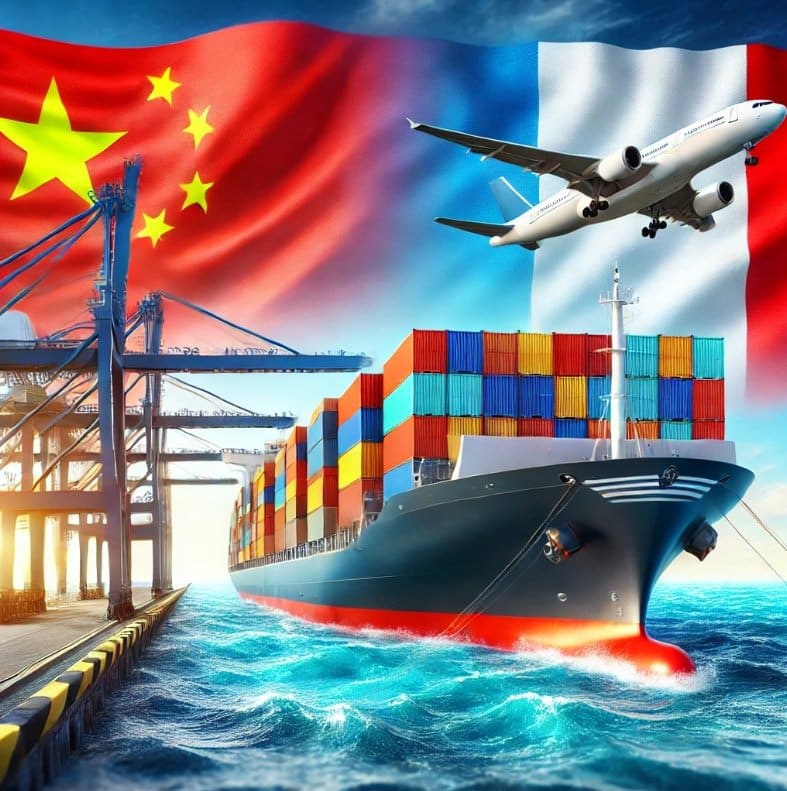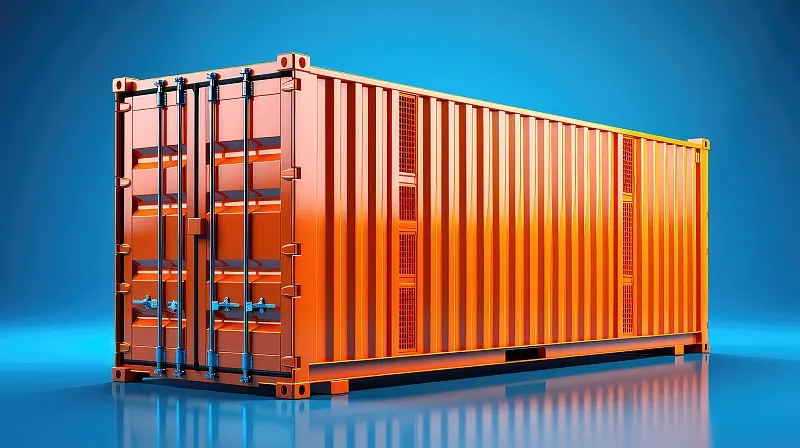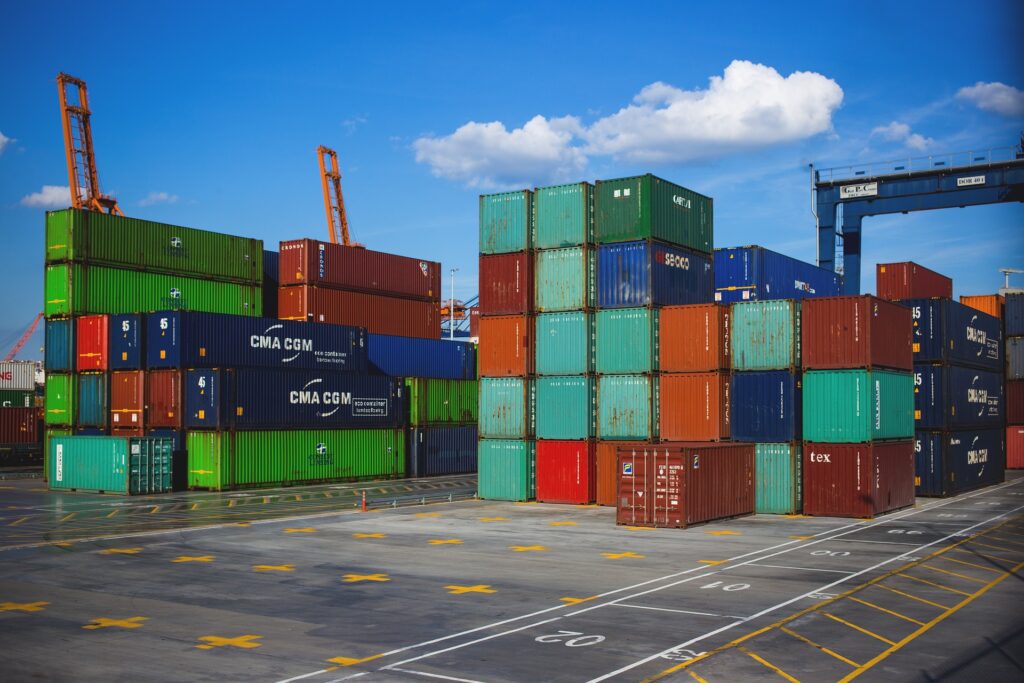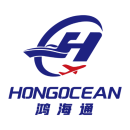As Sino-French trade grows, sea containers have become a vital link between the two countries’ commercial exchanges. However, many businesses often encounter the challenge of underfilled containers, leading to wasted space and higher shipping costs. Understanding container transportation costs from China to France is essential for developing effective trade strategies and managing operating expenses. This article will examine container shipping costs, helping you boost transportation efficiency and become an expert.

How to Ship a Container from China to the France?
Shipping a container from China to France isn’t rocket science, but it does have some important steps. First, you must decide between the two main options: LCL or FCL.
Full Container Load (FCL): With FCL, you rent an entire container (either 20-foot or 40-foot) to ship your goods. Even if the container isn’t filled, you’ll still pay for the full container. FCL shipping is typically faster and safer because your cargo remains sealed throughout transit, with no unloading or reloading.
Less than Container Load (LCL): LCL is a flexible option if you don’t have enough cargo to fill an entire container. Your goods are consolidated with shipments from other customers in the same container. Costs are based on the volume or weight of your cargo. While LCL usually has a higher unit price than FCL and slightly longer transit times due to additional handling at ports, it can be a cost-effective choice for smaller shipments.
Now, here’s a pro tip: use Hongocean freight forwarder. These are shipping experts who can make your life easier. They handle paperwork, find the best routes, and often get better rates.
Hongocean Freight forwarders have connections with multiple shipping lines. This means they can shop around for the best deals. They also know all the rules and regulations, which can save you from costly mistakes.
Remember, shipping isn’t just about moving goods from point A to point B. It’s about getting your cargo delivered safely, on time, and within budget — and a good freight forwarder can make all the difference.
How much does it cost to ship containers to France
The cost of shipping containers to France can vary widely depending on several factors, such as the size and type of container, the origin and destination ports, the shipping route, carrier rates, fuel costs, additional surcharges, and any applicable customs duties or taxes.
As a rough estimate, shipping a standard 20-foot container (TEU) to France typically ranges from $1,800 to $3,900, while shipping a 40-foot container (FEU) may cost between $3,700 to $7,200. However, prices can fluctuate based on market conditions, seasonal demand, and other factors.
Choosing Between 20ft and 40ft Containers
When choosing between a 20ft container and a 40ft container, you need to consider several factors, such as the volume and weight of your goods, the cost of shipping, and the shipping route.
20ft containers are ideal for smaller loads and can handle about half the volume and weight of a 40ft container. These containers are the more cost-effective option for lighter, less voluminous goods, and are easier to handle and load, making them a popular choice for many businesses.
On the other hand, 40ft containers can accommodate larger, heavier loads, making them suitable for businesses with high-volume shipping needs. Although they cost more to transport, they are generally more economical for large-volume shipments, as you’re essentially getting twice the space for less than twice the price of a 20ft container.

Cost of 20ft and 40ft Containers from China to France
Container shipping costs can vary widely based on several key factors. The container size—typically 20-foot or 40-foot—plays a major role in determining the price. Distance is another crucial factor, with longer routes generally leading to higher costs. In addition, current fuel prices, port fees, documentation costs like bills of lading, and seasonal demand fluctuations can all impact the final shipping price. Below are the detailed container shipping costs from China to France:
| POL (port of loading) | POD (port of discharge) | 20ft container cost | 40ft container cost |
|---|---|---|---|
| Shanghai | Le Havre | $2050-$3250 | $4000-$4200 |
| Shenzhen | Le Havre | $2100-$3300 | $4050-$5250 |
| Qingdao | Le Havre | $2050-$3250 | $4050-$5250 |
| Ningbo | Le Havre | $2000-$3400 | $4050-$5350 |
| Shanghai | Marseille | $2050-$3450 | $4050-$5200 |
| Shenzhen | Marseille | $2000-$3200 | $4000-$5300 |
| Qingdao | Marseille | $2050-$3350 | $4050-$5200 |
| Ningbo | Marseille | $2000-$3150 | $4050-$5150 |
| Shanghai | Brest | $2050-$3250 | $4050-$5250 |
| Shenzhen | Brest | $2050-$3250 | $4000-$5300 |
| Qingdao | Brest | $2000-$3300 | $4000-$5200 |
| Ningbo | Brest | $2050-$3100 | $4050-$5150 |
Estimated transit time to ship a container from China to France
The average transit time, sailing, and vessel schedule to ship your container from China to France from the major ports in China.
| Continent of origin | Country of origin | Port of origin | Port of destination | Transit time (days) |
|---|---|---|---|---|
| Asia | China | Port of Shanghai | Port of Le Havre | 35 |
| Asia | China | Port of Shenzhen | Port of Paris | 40 |
| Asia | China | Port of Ningbo-Zhoushan | Port of Lyon | 38 |
| Asia | China | Port of Hong Kong | Port of Marseille | 39 |
| Asia | China | Port of Guangzhou | Port of Le Havre | 40 |
| Asia | China | Port of Qingdao | Port of Paris | 42 |
| Asia | China | Port of Tianjin | Port of Lyon | 42 |
| Asia | China | Port of Dalian | Port of Marseille | 17 |
| Asia | China | Port of Xiamen | Port of Le Havre | 20 |
| Asia | China | Port of Yingkou | Port of Paris | 20 |
What Documents Are Required to Import Goods from China to France?
When importing goods into France, you’ll typically need the following documents:
- Commercial Invoice: Lists details about the buyer and seller, a description of the goods, quantities, unit prices, total price, and trade terms (e.g., FOB, CIF).
- Packing List: A detailed breakdown of each package’s contents, including quantity, gross weight, net weight, and dimensions.
- Bill of Lading: Serves as both a transport contract and proof of ownership of the goods.
- Certificate of Origin: Certifies the country of origin of the goods. This may be required to qualify for preferential tariffs or to meet customs requirements.
- Import Declaration: Submitted to French (EU) customs during clearance. Your appointed customs broker typically handles this.
- EORI Number: Required for any business or individual involved in import/export activities within the EU.
- Certificate of Conformity/Test Report (e.g., CE Mark): Proof that certain products (such as electronics, toys, and medical devices) comply with EU standards.
- Import License: This may be necessary for regulated goods, such as agricultural products, chemicals, or weapons.
Recommendation:
Before shipping, it’s highly recommended to confirm the exact list of required documents with your French buyer or your designated customs clearance agent. This will help ensure a smooth customs process and prevent unnecessary delays or additional costs.

Factors Influencing Sea Container Price
Several key factors influence the price of sea containers when shipping goods from China. Understanding these factors can help businesses better manage their shipping costs and plan their logistics more effectively.
1. Container Type
The size and capacity of the container significantly impact the sea container price. A 20-foot standard container, ideal for small to medium shipments, typically costs less than a 40-foot high cube container, better suited for larger volumes.
2. Transportation Season
The sea container price fluctuates with the shipping season. During peak times, such as before major e-commerce festivals, high demand, and limited space can drive prices up by 20%-30% compared to off-peak periods when rates are lower due to reduced demand.
Market Supply and Demand
An increase in exports from China to France, coupled with a shortage of containers, can lead to higher sea container prices. Conversely, decreasing exports or an oversupply of containers can lower prices. Additionally, international political situations and fuel price fluctuations can indirectly affect the price of sea containers. For example, rising fuel costs often result in increased shipping rates.
Recommendations for Shipping from China to France
To ensure smooth, compliant, and efficient shipping operations between China and France, consider the following best practices:
1. Partner with an Experienced Freight Forwarder
Choose a freight forwarder with proven experience handling China–France trade routes. Ideally, they should be well-versed in both countries’ customs regulations and up to date on international sanctions and compliance issues.
2. Consult the Customs Authorities
Contact the Chinese and French customs offices for information on import/export rules, documentation requirements, and restricted or prohibited item lists.
3. Seek Legal and Compliance Guidance
For sensitive or high-risk goods or when dealing with complex trade transactions, it’s wise to engage legal and compliance experts. They can help ensure your shipment aligns with all applicable laws, trade agreements, and sanction regulations, minimizing the risk of penalties or shipment delays.



